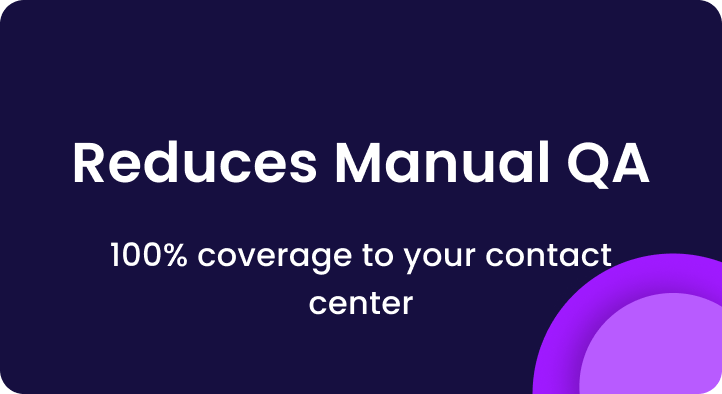In the dynamic world of sales, staying ahead of the game requires more than just a charismatic smile and a firm handshake.
Successful sales professionals understand the importance of leveraging data and statistics to make informed decisions and fine-tune their strategies.
In a landscape where every interaction counts, the ability to analyze and apply relevant sales statistics can be the key differentiator between hitting targets and falling short.
This article delves into 51 sales statistics that will not only enlighten you about current trends but also empower you to confidently navigate the complex realm of sales.
From understanding consumer behavior to optimizing your sales funnel, these statistics serve as a valuable guide to help you sell like a pro.
In this guide, you’ll find:
- 51 Key Sales Statistics
Table of Contents
A. Social selling statistics
1. According to LinkedIn data, businesses utilizing social selling outperform those that don’t, with a remarkable 78% higher sales performance, and those prioritizing social selling are 51% more likely to achieve their sales quotas. (LinkedIn)
2. Social media has become an integral component of the sales strategy for 90% of high-achieving sales professionals. (LinkedIn)
3. 8% of sales representatives who use social selling outperform their non-engaged counterparts (Sproutsocial)
4. A recent Hubspot’s report reveals that social media is the third most effective sales channel. (Hubspot)

Key takeaway
Social media is an indispensable part of everyone’s life.
So is the case for salespeople. Social media serves both as a connecting channel and a networking medium.
You learn about your prospects and customers, including their preferences, likes and dislikes, personality traits, and so on- often without even talking to them.
While social selling is a slow process, it’s a highly effective one. It helps you nurture the prospect, build trust, and occupy a position in your mind.
As a 21st-century sales rep, your sales effectiveness will always remain low if you are not leveraging social media to its full potential.
B. Sales prospecting statistics
5. 69% of buyers have accepted cold calls from new providers (Crunchbase)
6. Top sellers spend an average of 6 hours every week researching their prospects (Crunchbase)
7. 40% of salespeople agree that prospecting is the most challenging part of the sales process, followed by closing 36% and qualifying 22%. (Hubspot)
8. Whether a potential customer connects with a sales representative depends mostly on their needs and budget. (RAIN Group)
9. Using video for prospecting is ten times more likely to get a response from a potential customer compared to reaching out through text. (Vidyard)
10. A majority of B2B buyers, 80%, prefer to interact with sales representatives who serve as trusted advisors, offering valuable insights into their industry. (Salesforce State of Sales)

Key takeaway
Prospecting is the most challenging part of the sales process.
In-depth research and preparation make it daunting, but they also separate successful salespeople from average ones.
Sales rockstars spend dedicated time prospecting each week, and are much more committed to prospecting as part of their daily sales effort.
C. Sales prospecting statistics
11. As of April 2023, the global count of social media users reached 4.8 billion. (Statista)
12. Better access to data could have resolved over 60% of customer support calls that ended in failure. (IBM)
13. 98% of shoppers expressed their intention to make at least one purchase through social shopping or influencer commerce in 2022. (Sproutsocial)
14. Shopping on social media seen hitting $1.2 trillion by 2025 (Bloomberg)
15. 67% of customers prefer self-service over speaking to a company representative. (Zendesk)
16. 1 in 3 customers will leave a brand they love after just one bad experience, while 92% would completely abandon a company after two or three negative interactions. (PwC)

Key takeaway
For businesses, these statistics convey several crucial insights. Firstly, the sheer magnitude of global social media users underscores the importance of maintaining a robust online presence.
The data indicates that leveraging social platforms for marketing, sales, and customer engagement is integral to staying competitive.
IBM’s emphasis on better access to data highlights the need for businesses to invest in technologies that facilitate data-driven decision-making.
Improved data accessibility can significantly enhance customer support and, by extension, customer satisfaction.
The increasing trend of shoppers engaging in social shopping and influencer commerce signals an evolving landscape in consumer behavior.
Businesses should explore and incorporate social commerce strategies into their marketing plans to tap into this growing market.
D. Sales follow up statistics
17. 60% of customers say no four times before saying yes whereas 48% of salespeople never even make a single follow-up attempt. (Invesp)
18. 48% of salespeople never even make a single follow-up attempt. (Invesp)
19. By 2025, 95% of customer interactions will be powered by AI. (Finance Digest)
20. The ideal times to call someone are on Wednesdays between 4 and 5 pm or within an hour of when they reach out to you. (Hubspot)
21. 50% of prospects aren’t a good fit for your selling. (Sales Insights Lab)
22. 19% of buyers prefer to have a conversation with a sales representative when initially discovering a product.
23. Sending follow-up emails at 11 a.m. on a Monday yields a 4.8% conversion rate, establishing it as the most effective time for such communication. (Sopro.io)

Key takeaway
If your sales reps are not following up with prospects, they are missing a big opportunity.
Research shows that sales are more than just a one-shot game in most industries. It’s a process, and the reps need to ensure that the prospect is moving down the funnel.
As the old saying goes, persistence pays in sales as well.
E. Cold-calling statistics
24. A significant 69% of buyers have agreed to cold calls from new providers (Crunchbase)
25. The best time to have a conversation with your prospects is between 4:00 to 5:00 PM. (CallHippo)
26. About 2.5% of cold calls result in successful meetings (Leadfeeder)
27. Companies that avoid making cold calls have seen their growth slow down by 42% compared to those who do make such calls.(Crunchbase)
28. 82% of buyers accept meetings with sellers who cold call. (RAIN Group)

Key Takeaway
Contrary to popular belief, cold calling is still not dead.
The spray-and-pray method is dead. In B2B selling, you can’t just cold-call people randomly and expect to close a deal.
Cold calling has evolved into inside sales, where you must do thorough prospect research before approaching someone on the phone or via LinkedIn.
Approaching prospects is the next important step where you need to open the sales conversation in the right manner.
However, make sure you have adapted to the better ways of doing a cold outreach.
F. Sales email statistics
29. An average of 347.3 billion emails are sent and received per day—a 4.3% increase from the previous year. (Oberlo)
30. The number of email users globally was 4.3 billion in 2022, and it is expected to increase to 4.6 billion by 2025. (Statista)
31. 45% of email recipients open an email based on the sender’s name and 33% on the subject line. (SuperOffice)
32. 2 out of every 3 marketers use email marketing to distribute content organically. (Content Marketing Institute)

Key takeaway
Unlike cold calls, sending sales emails is a scalable process. And when done in bulk, it tends to generate some results.
However, sales emails have followed the same path as cold calls in the past couple of years. They are now considered nothing but spam.
A better approach is thoroughly researching your prospect/prospect group and writing pointed messages with clear CTAs.
Email still brings the best ROI, provided you are doing it right.
G. Sales closure statistics
33. About 15% of marketers said closing more deals was their top priority for the next year. (Hubspot)
34. It takes 5 follow-ups to close 80 percent of sales conversions (Marketing Donut )
35. 36% of salespeople say closing is their job’s hardest part. (Leadesquared)
36. Fridays are good for closing deals (Lime)

Key takeaway
Closing sales is an art, so only a handful of salespeople close most of the revenue.
While pricing is often a significant factor for the prospect, it’s not the only one.
The sales rep needs to understand the customer’s stated and unstated pain points and should focus on selling value rather than just the price.
H. Sales training statistics
37. In 2019, organizations on average spend $2,326 (median $1,000) per salesperson yearly on their training. (ATD)
38. In successful companies, it usually takes about four weeks for new reps to finish their onboarding and become fully ready for their job in four to five months. (Mindtickle)
39. According to Xerox, 87% of the new knowledge learned in sales training is lost within 12 weeks. (Xerox)
40. Companies with a dedicated sales enablement function have a 29% increase in sales training effectiveness. (Sales Management Association)

Key takeaway
You have hired the best salesman, but she can’t do much without proper and ongoing training.
Selling is more complex than it was 10 years ago, and you need to ensure your people are equipped with the right tools and knowledge to help them learn, grow, and hit their sales quota.
A performing sales team can’t be built without an investment in training and coaching.
I. Conversation intelligence statistics
41. The global conversation intelligence software market revenue stood at US$ 16,010.44 Million in 2018 and is expected to grow at a CAGR of 7.8% during the forecast period of 2019-2027. (Absolute Market Insights)
42. The worldwide market for conversational AI, which includes chatbots and intelligent virtual assistants, is projected to increase at a Compound Annual Growth Rate (CAGR) of 30.2%, reaching $22.6 billion by 2024.
43. Almost 80% of CEOs have either made changes or planned to change how they handle client interactions using conversational AI technologies. (Accenture)
44. Approximately 90% of companies noted quicker resolution of complaints, and more than 80% reported efficiently handling more phone calls using conversational AI solutions. (MIT)

Key takeaway
It’s no secret that AI and speech analytics are rapidly being incorporated into the daily lives of tech-savvy salespeople.
These technologies can help them personalize the sales process, execute better sales coaching, improve rep onboarding time, and cut costs by up to 30%.
Here’s a list of the best conversation intelligence software available in the market.
J. Sales Technology Statistics
45. About 64% of leaders in enterprise IT are actively exploring ways to use AI, and there is a projected growth of 95% in AI over the next two years. (Salesforce)
46. 65% of sales representatives who adopt mobile technology achieve their sales quotas. (LeadSquared)
47. 97% of sales leaders and sales operations pros say AI gives reps more time to sell.(Salesforce)
48. The global sales acceleration technology market, which reached US$ 92.4 Billion in 2022, is projected to reach US$ 235.8 Billion by 2028. (Imarc Group)

Key takeaway
In the realm of business, these insights reveal a clear path forward. IT leaders’ active exploration of AI underscores the growing importance of integrating artificial intelligence into your operations.
Understanding the impact of mobile technology on sales success emphasizes the need to embrace technological tools that empower your sales representatives to meet and exceed quotas.
Moreover, the unanimous agreement among sales leaders on the time-saving benefits of AI signals a broader recognition of the value technology can bring to your sales operations.
The flourishing sales acceleration technology market further encourages businesses to invest in cutting-edge technology to stay competitive and enhance overall sales efficiency.
K. Just for fun statistics
49. 92% of all customer interactions happen over the phone. (Salesforce)
50. 3 out of 4 managers will take action from a cold call or email alone. (DiscoverOrg)
51. The average B2B salesperson makes about 35 calls a day. (ServiceBell)

Conclusion
No matter how complex or simple your sales process is, you can draw inspiration from these sales statistics and improve your sales skills.
These stats help you stay on the course and ensure your sales process is still relevant to the changing business environment.



 On this page
On this page

